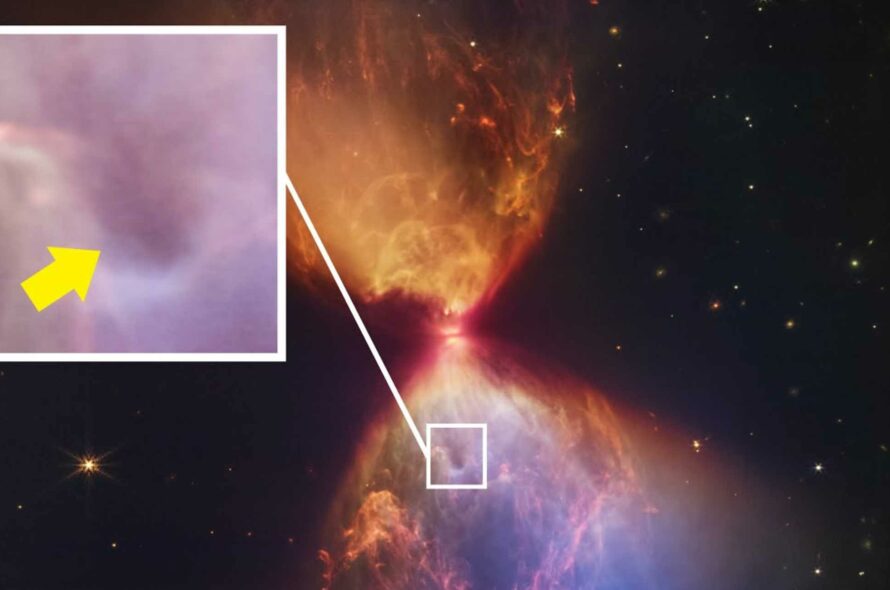Following 15 years of data collection in a galaxy-sized experiment, scientists have “heard” the perpetual chorus of gravitational waves rippling through our universe for the first time—and it’s louder than expected.
The groundbreaking discovery was made by scientists with the North American Nanohertz Observatory for Gravitational Waves (NANOGrav) who closely observed stars called pulsars that act as celestial metronomes. The newly detected gravitational waves—ripples in the fabric of space-time—are by far the most powerful ever measured: They carry roughly a million times as much energy as the one-off bursts of gravitational waves from black hole and neutron star mergers detected by experiments such as LIGO and Virgo.
Most of the gigantean gravitational waves are probably produced by pairs of supermassive black holes spiraling toward cataclysmic collisions throughout the cosmos, the NANOGrav scientists report in a series of new papers appearing today in The Astrophysical Journal Letters.
“It’s like a choir, with all these supermassive black hole pairs chiming in at different frequencies,” says NANOGrav scientist Chiara Mingarelli, who worked on the new findings while an associate research scientist at the Flatiron Institute’s Center for Computational Astrophysics (CCA) in New York City. “This is the first-ever evidence for the gravitational wave background. We’ve opened a new window of observation on the universe.”
The existence and composition of the gravitational wave background—long theorized but never before heard—presents a treasure trove of new insights into long-standing questions, from the fate of supermassive black hole pairs to the frequency of galaxy mergers.
For now, NANOGrav can only measure the overall gravitational wave background rather than radiation from the individual “singers.” But even that brought surprises.
“The gravitational wave background is about twice as loud as what I expected,” says Mingarelli, now an assistant professor at Yale University. “It’s really at the upper end of what our models can create from just supermassive black holes.”
The deafening volume may result from experimental limitations or heavier and more abundant supermassive black holes. But there’s also the possibility that something else is generating powerful gravitational waves, Mingarelli says, such as mechanisms predicted by string theory or alternative explanations of the universe’s birth. “What’s next is everything,” she says. “This is just the beginning.”
A galaxy-wide experiment
Getting to this point was a years-long challenge for the NANOGrav team. The gravitational waves they hunted are different from anything previously measured. Unlike the high-frequency waves detected by earthbound instruments such as LIGO and Virgo, the gravitational wave background is made up of ultra-low-frequency waves. A single rise and fall of one of the waves could take years or even decades to pass by. Since gravitational waves travel at the speed of light, a single wavelength could be tens of light-years long.
No experiment on Earth could ever detect such colossal waves, so the NANOGrav team instead looked to the stars. They closely observed pulsars, the ultra-dense remnants of massive stars that went supernova. Pulsars act like stellar lighthouses, shooting beams of radio waves from their magnetic poles. As the pulsars rapidly spin (sometimes hundreds of times a second), those beams sweep across the sky, appearing from our vantage point on Earth as rhythmic pulses of radio waves.
The pulses arrive on Earth like a perfectly timed metronome. The timing is so precise that when Jocelyn Bell measured the first pulsar radio waves in 1967, astronomers thought they might be signals from an alien civilization.
As a gravitational wave passes between us and a pulsar, it throws off the radio wave timing. That’s because, as Albert Einstein predicted, gravitational waves stretch and compress space as they ripple through the cosmos, changing how far the radio waves have to travel.
For 15 years, NANOGrav scientists from the United States and Canada closely timed the radio wave pulses from dozens of millisecond pulsars in our galaxy using the Arecibo Observatory in Puerto Rico, the Green Bank Telescope in West Virginia and the Very Large Array in New Mexico. The new findings are the result of a detailed analysis of an array of 67 pulsars.
“Pulsars are actually very faint radio sources, so we require thousands of hours a year on the world’s largest telescopes to carry out this experiment,” says Maura McLaughlin of West Virginia University, co-director of the NANOGrav Physics Frontiers Center. “These results are made possible through the National Science Foundation’s (NSF’s) continued commitment to these exceptionally sensitive radio observatories.”
Disclaimer: The views, suggestions, and opinions expressed here are the sole responsibility of the experts. No Idea Scope Analytics journalist was involved in the writing and production of this article.






